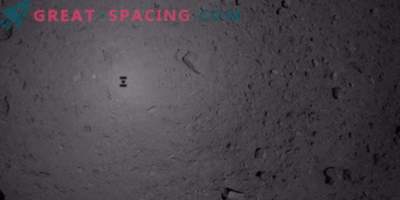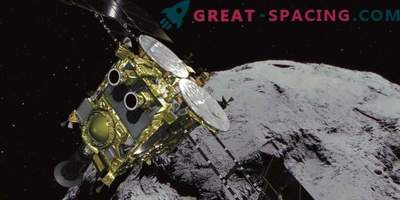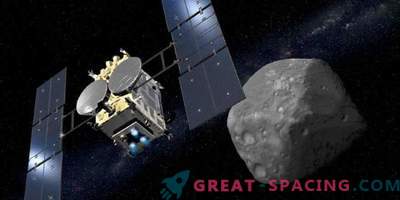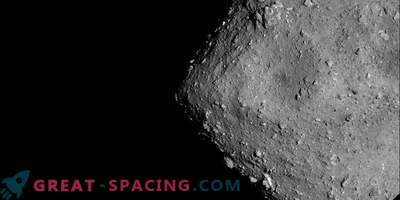
Two tiny jumping rovers that landed on Ryugu’s asteroid last week sent amazing views of the asteroid’s rocky surface. On September 21, the Japanese mission Hayabusa-2 dropped two almost identical rovers Minerva-II1A and Minerva-II1B onto an asteroid surface. The new video presents a review from Minerva-II1B, where you can see how the Sun moves across the sky, because the bright starlight reflects from the brilliant rocks of Ryugu. Videos were filmed for 1 hour and 14 minutes, starting from September 22.

The Minerva-II1B rover from the Hayabusa-2 mission sent this image to Ryugu just before jumping onto the surface on September 22, 2018
Unlike the Martian rovers, this pair does not have wheels. They do not roll on the surface, but make horizontal “jumps” of 15 meters. Asteroid gravity is so low that the process of one jump takes up to 15 minutes. The Minerva-II1 rovers managed to capture the asteroid both on the surface and at the moments of jumps. Images may be slightly distorted when moving.

On September 22, 2018, the MINERVA-II1A captured the shadow of its own antenna
The MINERVA-II1A was able to fix its own shadow on the asteroid surface between the jumps. In the shade you can see its antenna and “pin” - a device that provides friction during jumps, protects solar cells during landing and measures the surface temperature.

The MINERVA-II1A Rover received this close look at the Ryugu asteroid rock on September 22, 2018
The Minerva-II1 vehicles are not the only mechanisms that come into contact with the asteroid. Hayabusa-2 plans to launch the MASCOT landing station in October, and in 2019 they will be joined by another “jumper” Minerva-II2. If everything goes according to plan, then in 2020, scientists will receive samples of the asteroid.











































